In table tennis, even the tiniest equipment tweak can throw everything off. Things like rubber thickness, blade construction, table surface, and even the arena’s humidity all shape how the game plays out. At the pro level, players rely on split-second timing, sharp instincts, and a fine-tuned sense of touch. When the feel changes, the whole balance collapses.
I started looking into seamless balls after noticing how many top players struggled at the 2024 Asian Championships and the 2025 World Cup. Their timing looked off, shots felt disconnected, and many just couldn’t find their groove. The deeper I looked, the more it felt like a rabbit hole. I’m still connecting the dots, but here’s what I’ve learned.
1. How We Got Here: From Celluloid to Plastic
Over the past three decades, table tennis has gone through several major equipment changes. In 2000, the ball size increased from 38mm to 40mm to slow the game down and reduce spin. That move already hit speed- and spin-heavy players hard.1 Then in 2014, the ITTF banned traditional celluloid balls, which had been the standard for over a century, due to safety and environmental concerns. That pushed the sport into the plastic-ball era.
The early plastic balls were a mess.2 They cracked easily, bounced inconsistently, varied in quality, and felt nothing like what players were used to. At the 2016 Rio Olympics, many players openly complained that the balls felt uncomfortable, and Dimitrij Ovtcharov even said, “You can never get used to it.”3
Things started improving in 2016 when manufacturers introduced ABS plastic. This material, made from acrylonitrile, butadiene, and styrene (ABS), produced sturdier and more consistent balls.4 But even then, that sense of unadaptability still hung in the air. The slower speed and reduced spin stretched out rallies, while the short game demanded more precision.
Timo Boll once commented that the balls didn’t grip the rubber well.5 Ma Long admitted they caused him more unforced errors. And Zhang Jike, once feared for his deadly third-ball attack, lost that early-match edge after that.6
2. Seamless vs. Seamed: Small Design, Big Difference
Once plastic balls became the standard, manufacturers took two different routes. Some stuck with the traditional seam design, fusing two halves together with a visible joint. Others started producing seamless balls, molded as a single hollow sphere.7
This might sound like a small detail, but it makes a huge difference. Seamless balls tend to be softer, bounce faster, generate less spin, and act in ways players can’t always read. These traits ripple through every part of the game.
2.1 Softer Feel, Weaker Feedback
Seamless balls have an even and softer shell according to lab tests.8 Seamed balls, reinforced along the seam, feel firmer and give clearer tactile feedback at impact.
Hardness affects how the ball deforms and rebounds off the racket. In play, a softer ball absorbs more energy and dulls the tactile feedback players rely on. Many say they can’t really “feel the ball” properly. In table tennis, feel means the tactile sense of how the ball grips the rubber and how your stroke connects. When that gets unclear, landing precise shots takes a hit.
2.2 Faster Bounce, Less Control
Even though seamless balls are softer, they actually bounce faster. That’s because of their dynamic elasticity, which allows the shell to snap back to shape efficiently and hold onto more energy after each hit.
In high-speed collision tests, seamless balls have a lower rebound-velocity decay rate compared to seamed balls.9 Less speed bleeds away on every bounce, faster, and stays live through the rally.
That might sound efficient, but in practice, it disrupts timing. The seamless ball doesn’t linger in the air or follow the usual arc. Instead of dropping neatly into the strike zone, it arrives sooner and higher than expected.10
This is especially tricky for flicks, brushing strokes, and soft touches. The ball often kicks up too high or flies long, turning a well-practiced move into a wild guess.
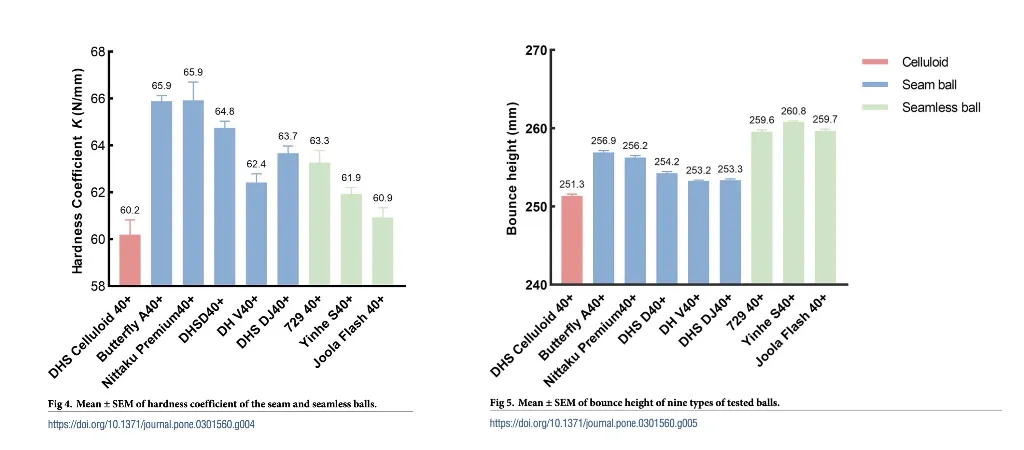
Data: Lu, Y., Ren, J. (2024). Effect of table tennis balls with different materials and structures on the hardness and elasticity. PLOS One.
2.3 Spin Drops Off
Spin is where seamless balls frustrate players the most. Under identical stroke conditions, they generate about 4.5% less spin (measured in revolutions per second) than seamed ones.11 Without a seam to bite into, the smooth surface slips.
For spin-heavy players, it feels like something’s missing. You brush harder, flex the wrist, adjust your angle, but the ball still won’t react as it used to. That mismatch between effort and outcome wrecks both control and confidence. Many pros have voiced frustration about this. Romanian veteran Elizabeta Samara, for example, criticized the Ownwin seamless ball used at the 2025 World Cup, saying it had “zero spin.”
Picture a swing set contest. When you stand and push at the right moment, the force transfers into upward motion and sends you higher. But if you’re stuck sitting, you still swing, just without that energy transfer and the same lift. That’s what it feels like with seamless balls. Same stroke, weaker response.
2.4 Flatter Arc, Strange Bounce
Spin does more than rotate the ball. It shapes how the ball behaves in the air.
Flatter flight. Topspin creates downward force through the Magnus effect, a physical force where rotation drags on the surrounding air, causing the ball to curve from its path. When seamless balls strip away some of that spin, the Magnus effect weakens. The ball travels on a flatter and deeper line,12 making its flight easier to track and counter.
Unpredictable bounce. With less spin biting into the racket and table, the ball skids forward or even pops upward instead of dipping. Players describe seamless balls as floaty or slippery. What should drop into a waist-high strike zone might come chest height or zip past before your swing starts.
These changes throw off rhythm, especially during quick flicks or loop transitions. The whole stroke breaks apart. Movement and contact no longer line up with what your body has trained for.
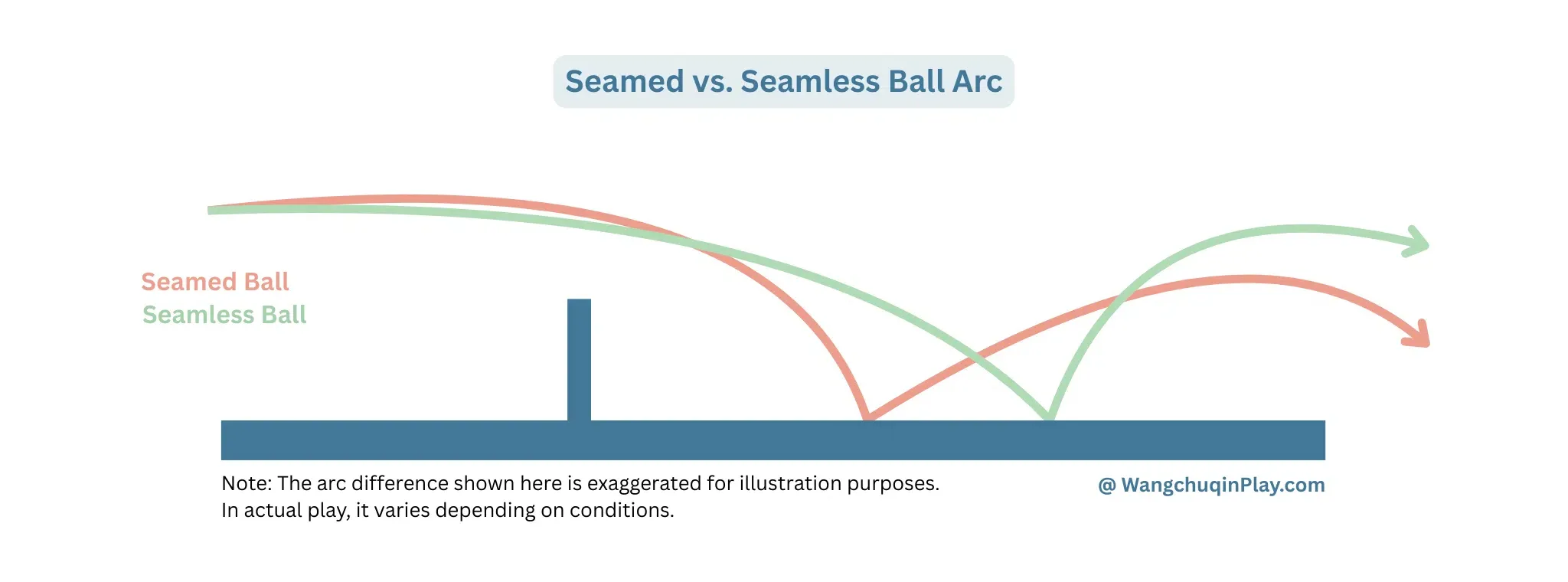
3. How Seamless Balls Disrupt Technical Execution
The physics we just discussed isn’t just theory. It shakes up the fundamentals rather than causing minor inconveniences.
3.1 Short Game Trouble
The short game lives on control. Drop shots, flicks, pushes, and serves depend on dwell time, the fraction of a second the ball stays on the rubber.
A livelier seamless shell shrinks that window. Players have less time to absorb speed, change angle, or squeeze in a bit more spin. Drop shots float too high. Pushes go long. Flicks jump more than expected.
Serving and receiving take a hit too. A wristy sidespin serve lands deeper, handing the opponent an easy counter. On receive, the ball looks light in the air yet quickly shoots off the table. Misreads pile up, and players swing early or end up flat-footed. Once timing slips, it’s hard to get back on track during a rally.
3.2 When the Loop Breaks, So Does the Rhythm
The forehand loop is one of the core strokes in table tennis. It clicks only when a player knows both when and where the ball will drop, then meets it in the strike zone at the right moment. That judgment keeps the stroke in rhythm, letting the motion chain (load, swing, brush, recover) flow smoothly.
Seamless balls interrupt that flow. A slightly higher, faster kick means the ball no longer falls into the familiar zone at the expected time. You wind up like usual, and boom… it flies by before your racket’s even close. To cope, you hold the stroke longer, step back, brush harder, or tweak the racket angle. But none of these moves come naturally, so the once-smooth sequence turns jerky.
The harder they chase timing, the more rhythm slips. Footwork stutters. The arm tightens. Instinct gives way to conscious correction, and sometimes overthinking. Every contact feels patched together instead of clean.
Not every stroke collapses equally. Backhand loops usually hold up better. They’re shorter, more compact, rely more on wrist and involve less disruption than forehand loops’ full-body coordination. Even so, a skid or pop can still push the ball out of reach.
It created real drama at the 2024 Asian Championships, where the Chinese national team struggled with the 729 seamless ball.13 Wang Chuqin’s performance during the men’s team event was especially telling. He looked visibly out of sync, misjudging several receive balls and losing points in short exchanges that would normally be his strength.14
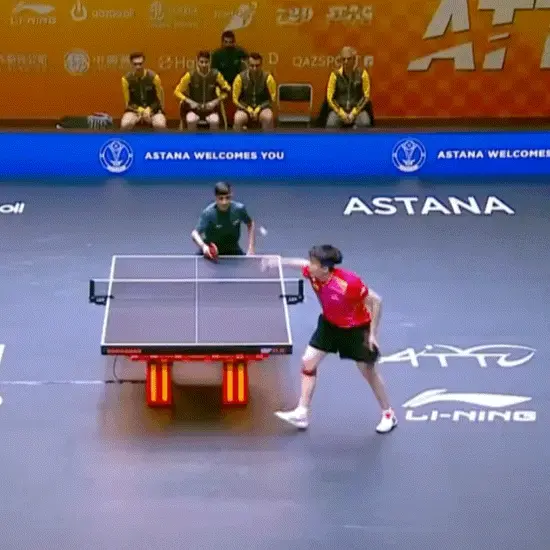
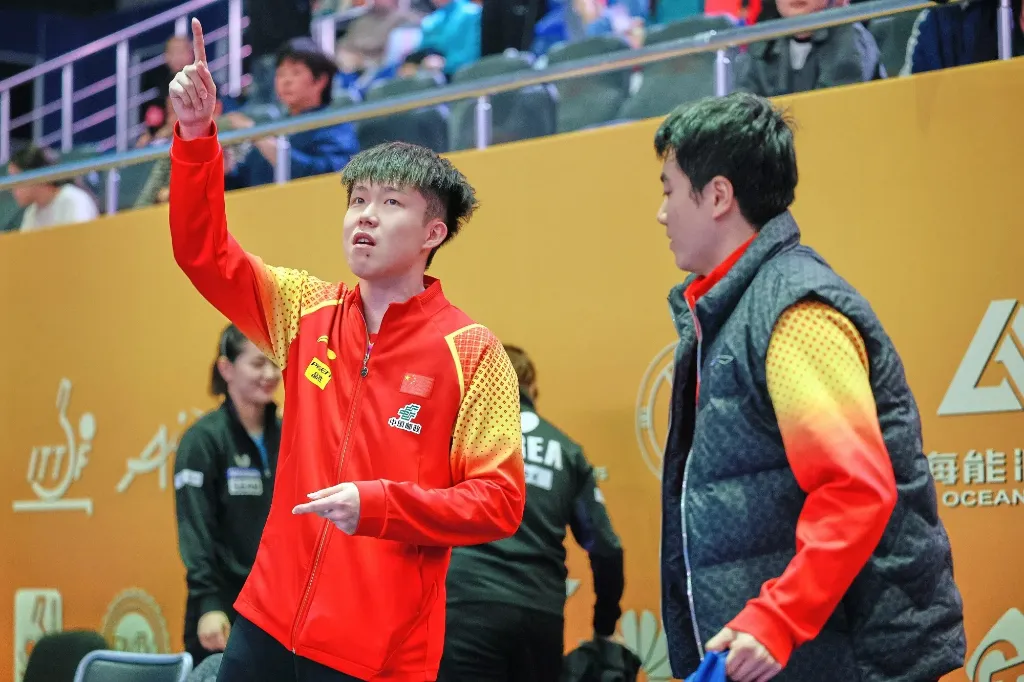
In a sport shaped by timing, repetition, and feel, breaking that rhythm means doing more than spoiling a technique. You throw off the internal clock players have spent years wiring into muscle memory.
4. Style Shifts and Adaptation Challenges
The technical shake-up does not stop at individual strokes. It tips the balance between whole playing styles, magnifies the equipment’s influence, and increases the randomness of matches.
4.1 Control-Based vs. Speed-Based Styles
Players who build rallies with heavy brushing and rhythmic spin control, like many in the Chinese national team, have struggled more with seamless balls. Their strategy depends on curving the ball, pinning opponents with tight short play, and steady buildup. When spin drops and bounce flattens, that script breaks down.
These athletes are not just tweaking a stroke or two. They’re reworking shot choices, tempo, and even point structure.
Meanwhile, speed-driven attackers are seeing the upside. Their game already lives on quick take-offs and straight-line drives, so the faster rebound and lower arc of the seamless ball work in their favor. Shots that once clipped the net or drifted long now stay in, and their margin for error widens. Adapting well is less about raw talent and more about how naturally a player’s habits match the ball’s behavior.
4.2 Equipment Makes the Gap Wider
The impact of seamless balls isn’t just about playstyle. It also depends on how well your equipment works with the new ball physics.
Players using tacky rubbers, such as DHS Hurricane on inner-carbon blades, count on friction and spin. Under seamless conditions, that grip feels dull. The same setup now demands more effort for less result.
In contrast, setups like Butterfly Dignics on ALC blades play well with seamless balls. The lively rubber combines with the ball’s quick rebound, encouraging early contact and flat-arc drives. Each contact feels clean, and overall consistency improves. Tomokazu Harimoto’s aggressive early contact style seems to thrive under the seamless ball conditions, especially when combined with fast gear.
The point is not that one setup is better than the other. It’s about whether your gear fits the ball’s behavior. The closer the match, the smaller the learning curve.
4.3 More Lucky Shots and Increased Randomness
As the game speeds up and spin plays a more minor role, another pattern has emerged: more net clips, more surprise points, and more upsets.
This isn’t just random luck. It’s baked into how the ball, playing style, and shot patterns now interact.
- Flatter arcs mean more balls skim the net.
- Faster rally pace tempts players into riskier placements, boosting edge and net.
- Less spin means balls roll over the net with momentum instead of dying
In the past, a net ball might drop dead. Now it rolls forward with speed and stays in play. A risky loop that used to go long might bounce in. A bold counter that once hit the edge and went out now stays on.
Aggressive players who strike early and aim at bold angles cash in most. Younger pros who grew up with seamless plastic barely feel like they’re adapting at all, since it has been the official ball in many major events.
That’s part of why matches are becoming less predictable. Quick-instinct hitters armed with compatible gear can now beat technically stronger opponents because their natural rhythm better fits the current ball. It’s messy, but honestly, that’s part of the fun.
5. Rethinking the System
Adaptation is part of being a pro. Players adjust to different lighting, tables, humidity, and even the floor. But seamless balls changed the actual feel of the sport. And worse, it keeps changing from event to event.
Players aren’t resisting change. They’re just stuck in a cycle. Before they fully adapt to one setup, they’re already thrown into another.
5.1 No Time, No Consistency
Today’s tournament schedule doesn’t give players room to settle in. Every event brings its own set of variables:
- Balls from different brands like DHS, Nittaku, or Yinhe, all with different bounce and spin
- Tables with different hardness and friction
- Flooring that changes in color, grip, and glare
- Lighting that affects visibility and depth perception
Even seamless balls vary noticeably between brands. At the 2025 World Cup, Wang Chuqin commented, “This seamless ball is very different from the ones we used before. They varied a bit in spin, speed, or other aspects in the past, but this one feels off in every way. It’s a complete shift. I’ve never really gotten used to it. I’m just taking it one match at a time and seeing how far I can go.”
Some players also ran into issues before matches began. At the 2024 Asian Championships, Doo Hoi Kem shared in her vlog that the official balls used were hard to handle, and several broke during each training session. Rumors said the Chinese national team didn’t get to practice with the actual game ball before the first match. The 729 balls used in training were from a different batch and felt different. That kind of disruption added to the overall sense of instability players were already dealing with.
Add a packed schedule on top of that. WTT and ITTF events run back-to-back, and there’s barely time to adjust before flying off to the next one. Even if you know what to change, there’s no room to apply it thoroughly. After an early loss at the recent World Cup, Dang Qiu reflected that he had to play with “a ball (Ownwim seamless ball) that I never used before” and admitted, “it was impossible for me (to prepare during the busy schedule).”
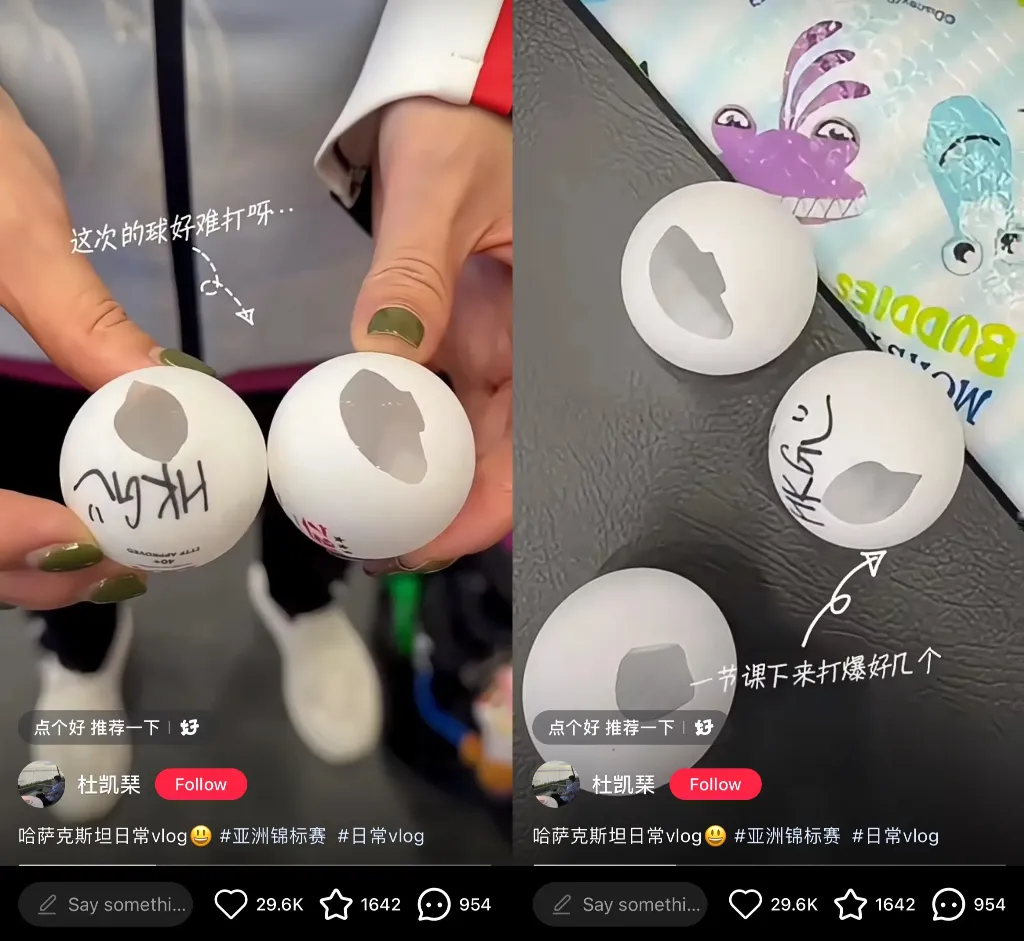

That’s why players like Liang Jingkun have called for a baseline standard. Not just for the ball, but across all playing conditions. Without it, even the best preparation starts to feel like a gamble. The mental and physical toll turns into a constant loop of exhaustion.
This constant shift doesn’t just waste practice. It wears players down mentally. You start to wonder if all your work will apply at the next stop. And when preparation feels meaningless, motivation and confidence take a hit.
5.2 Building a New Feel
Despite all that, top players are still trying to adapt. New training methods are being developed to handle seamless ball conditions.
Here’s what the new approach looks like:
- Holding the stroke longer to time the bounce right
- Brushing more deliberately to recover spin
- Adjusting loop timing for consistent arcs
- Expect longer rallies, shifting focus from the “finish the point in one shot” mindset
- Relying more on placement and angles instead of just spin in the short game
- Rebuild trust in the new timing and confidence, and let go of old habits
And it’s working. Lin Yun-Ju, for example, has slowed his loop and increased the brush to regain depth. Wang Chuqin has made his third-ball attack more flexible, and his short game now relies on soft, friction-based touches rather than outright slaps. This tactical shift became clearer after his struggles at the 2024 Asian Championships. You can watch how he adjusted his scoring patterns under tricky flying-ball conditions here: Wang’s Wild Ride at Asian Championships 2024 and Breaking Down: Wang Chuqin vs Kao Cheng-Jui at Asian Championships
However, all shifts come at a cost, in time, energy, and competitive sharpness.
They’re structural changes. They’re building a new feel from scratch.
5.3 It’s Not Just About the Ball
The game they mastered keeps shifting beneath them. The seamless ball has shaken up style dynamics, erased years of muscle memory, and handed the advantage to habits some players never trained for.
The deeper issue is the environment that allowed all changes without giving players time or consistency to adjust.
What is missing is not dedication but stability. If equipment and balls keep changing, and the schedule never slows down, players are stuck relearning the game over and over. It is slow burnout.
There’s talk that the tables in the WTTC Doha 2025 will be red and gold. Good luck to everyone’s eyes.
I’ll also watch the next equipment shift and its real-world impacts on the game we follow closely.
Read More
Date of ITTF Approved Equipment
References
- Đokić Z., et al., Effects of Rule Changes on Performance Efficacy: Differences between Winners and Losers Table Tennis Players. Facta Universitatis, Series: Physical Education and Sport, 2019: p. 149– 163. ↩︎
- ITTF President Thomas Weikert ensures work to improve quality of balls – International Table Tennis Federation ↩︎
- A Rio Table Tennis Lament: That’s the Way the Ball Crumples – The New York Times ↩︎
- The transition from celluloid to plastic balls – International Table Tennis Federation ↩︎
- Seniority prevails, Timo Boll wins in Incheon – International Table Tennis Federation ↩︎
- Zhu, H. (2015). Technical and Tactical Changes by New Plastic Table Tennis on Zhang Jike. Journal of Hangzhou Normal University (in Chinese). ↩︎
- CN201453975U – Integral seamless-structure table tennis – Google Patents ↩︎
- Lu, Y., Ren, J. (2024). Effect of table tennis balls with different materials and structures on the hardness and elasticity. PLOS One. ↩︎
- Lu, Y., Ren, J. (2024). ↩︎
- Zhai, Y. (2023). Comparative analysis of the batting effects of table tennis players on Hongshuangxi D40+seamless plastic ball and Yinhe 40+seamless plastic ball. Liaoning Sport Science and Technology (in Chinese). ↩︎
- Xiao Y. (2019). Experimental Study on the Elastic Characteristics of New Types of Seamed and Seamless Plastic Table Tennis Ball and Its Effect on the Speed and Spin of the Ball. Journal of TUS Vol.34 No.1 2019. ↩︎
- Tian, J. (2024). The difference of dynamic elasticity characteristics and stroke effect between two types of new material seamed plastic table tennis ball. Scientific Reports. ↩︎
- “絶対王者”中国代表に何が起こっているのか 現地で見た2つのポイント | 卓球メディア|Rallys(ラリーズ) ↩︎
- Wang’s Wild Ride at Asian Championships 2024 ↩︎
Leave a Reply